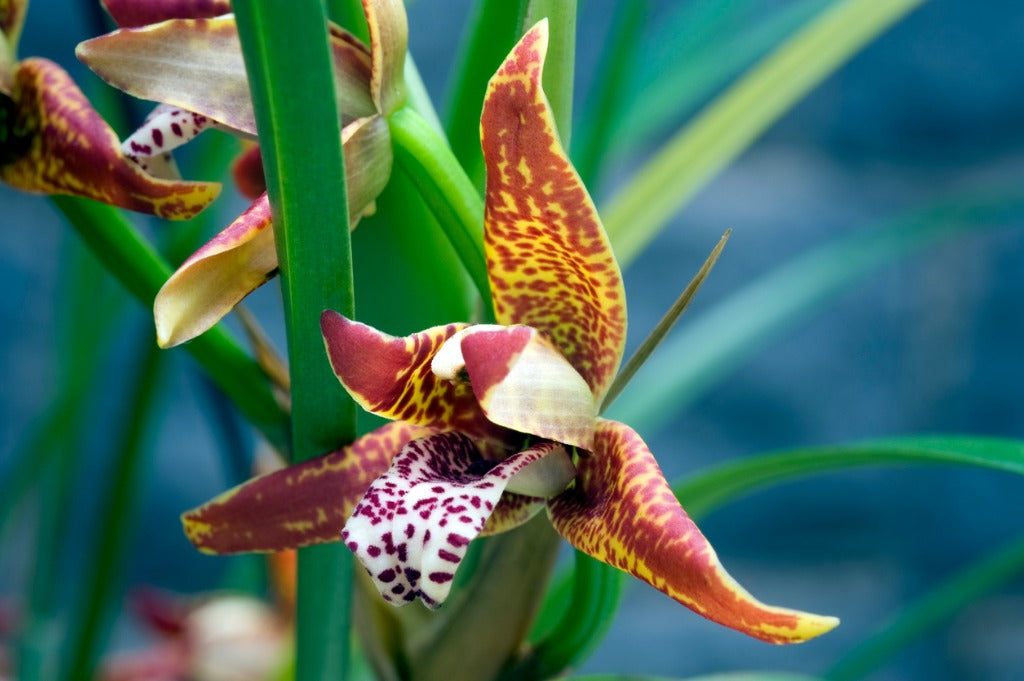Fast Facts Maxillaria Orchids
Botanical Name: Maxillaria (max-ih-LARE-ee-uh)
Horticultural Trade Abbreviation: Max.
Family: Orchidaceae
Subfamily: Epidendroideae
Tribe: Cymbidieae
Subtribe: Oncidiinae
Number of recognized species: 650 to 700 orchid species depending on the source
Type species: Maxillaria platypetala Ruiz & Pav. 1798
Origin/Distribution: Tropical and subtropical Americas
Growing classification: Maxillaria orchids can be sympodial, epiphytes, terrestrial, and lithophyte in nature.
Blooming season: Autumn, Winter, to early Spring
Flower colors: Maxillaria orchids bloom in a wide range of colors, including red, yellow, purple, white, and almost black flowers.
Understanding Maxillaria Orchids
Arguably one of the most beautiful, Maxillaria is also one of the biggest orchid genus among all the New World Orchids. An interesting trivia: its name comes from the Latin word “maxilla” which translates to jawbone in reference to the lip and column of this orchid plant that bears an uncanny resemblance to insect jaws.
Maxillaria genus consists of 650 to 700 recognized orchid species distributed in tropical and subtropical regions of the Americas, from Florida, West Indies, Brazil, and Argentina. These exquisite orchid plants can be found at high altitudes of up to 3,500 meters above sea level. They can be epiphytes, terrestrials, and lithophytes in growing behavior.
The flowers of Maxillaria orchids can come in different sizes, ranging from half an inch to over six inches in diameter. They bloom in a wide range of colors, including red, yellow, purple, white, and almost black flowers. Some Maxillaria orchids even have unique stripes, spots, and prints. Inflorescence varies from species to species with some having only one and some producing clusters of inflorescences. Almost all species are triangular in shape sporting three sepals and two petals. Maxillaria orchid blooms are characteristically fragrant. A standout example would be the Maxillaria tenuifolia dubbed as the coconut orchids for its sweet scent akin to coconuts.
Orchid Care: How to Maintain Maxillaria Orchids
Are you curious if you have the knack to grow orchids at home? Orchid flowers may appear high-maintenance but nothing can be further from the truth. Once you understand the appropriate light, watering, or fertilizing needs of your specific orchid plant, your orchid growing and/or orchid collecting experience will be fun and fruitful.
Check out some frequently asked questions about Maxillaria orchid care.
How much light does my orchid need?
Maxillaria orchids share similarities with Cattleya orchids in the sense that they both thrive better under bright but indirect light. The leaves and petals of orchid plants can be quite sensitive to harsh, hot sunlight that can brown and burn them. A north-facing windowsill or a shaded part of your balcony, patio, or garden that gets plenty of morning sunshine all make ideal spaces for growing this type of orchid.
How should I water my orchids?
Water Maxillaria orchids copiously all year round. Space out watering sessions and water only when the soil is completely dried. A wise practice would be to water your orchids daily in the morning. This way, you are allowing the potting material to dry throughout the day. It is an excellent preventive measure against plant diseases and rotten roots that can be caused by excess moisture or overwatering.
Temperature requirements
According to the American Orchid Society, the majority of Maxillaria orchids come from humid cloud forests and do well under intermediate temperatures (55F nights/85F days). They also will require 40 percent humidity all year round.
Should I feed/fertilize my orchids?
Fertilize Maxillaria orchids twice a month during blooming season with a one-quarter to one-half strength of balanced orchid fertilizer weakened by diluting in water.
Where should I grow my orchid?
Maxillaria orchids are quite sensitive to repotting and should be planted in a well-draining epiphyte potting material from the beginning. Repot only when necessary, such as when the plant has grown or new roots have sprouted.
References:
American Orchid Society
Jay’s Internet Orchid Species
Encyclopedia Britannica



I’m from Central América in Guatemala. Good article! We have a few Macillarias Cuculattas in our house.
Leave a comment